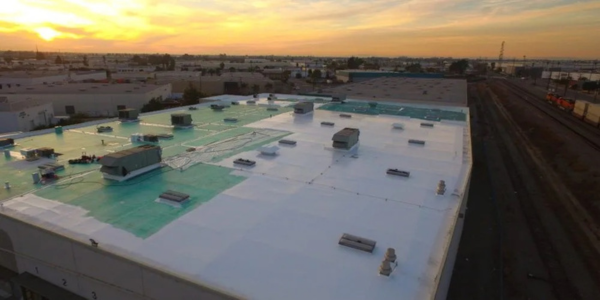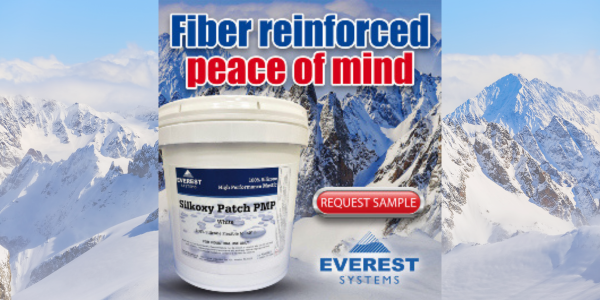UP TO THE MINUTE
Choosing a deck waterproofing system

By Pli-Dek.
In the world of decks, a lath system is a great ace to have in your back pocket of waterproofing solutions.
There are many different types of specialty coatings in the construction industry, from waterproof deck coatings to fluid applied waterproofing membranes and epoxy flooring and concrete coatings. When it comes to waterproofing a plywood deck, there are two main categories of solutions:
- Rolled or troweled on system
- Lath system
The rolled or troweled on systems are often what are first thought of by consumers, with a popular deck waterproofing option being simply painting it. But a lath system, which involves a mesh-based layer, then a waterproofing membrane and a protective coat on top, is also a great option. To help guide your clients to the right solution for them, the experts here at Pli-Dek have gone into depth about when and where a lath system should be used.
Deck waterproofing that is rolled or troweled over the plywood
Polyurethane systems are directly applied over the plywood with a roller. Polyurethane can prevent water penetration and provide a hard surface for low or moderate levels of pedestrian traffic. The difficulties with this type of system are that multiple layers are required to build up a thick enough layer to completely seal the wood. Unless this is done small holes will remain in the layer that will allow moisture to enter the wood. Furthermore, routine resurfacing is required, every few years, to reseal the surface. A simple polyurethane coating is not a good deck waterproofing system to use with high pedestrian traffic.
Cement resin waterproof deck systems are available in many variations. The most common are mixtures of acrylic polymer with cement. This is applied over the plywood surface and provides a waterproof durable surface. This type of system can be improved by the addition of multiple layers. A base layer of formulated resins, which increases the flexibility and adhesion to the surface, is coated with the acrylic polymer and cement layer and lastly with an elastomeric polyurethane or polyurea waterproof layer. These systems provide more durability to pedestrian traffic; however, they require routine resealing.
Lath waterproofing systems
Systems that use lath employ a 2.5 pounds per square yard galvanized metal mesh, termed the lath. The lath is attached to the existing surface per manufacturer specifications to provide a stable and adherable surface, to which the coating is to be applied. A polyacrylic emulsion base coat is then applied to provide a tough, durable, even surface that is resistant to cracking. The finish coat is then applied which is available in a wide variety of options. The colors, textures and design patterns of the finished floor are customized for each individual application. The finished product is durable, cost-effective and requires little maintenance. The lathe system provides superior durability and waterproofing capability compared to the non-lath systems. Problems resulting from the failure of a non-lath system can be remedied by upgrading to a system that uses lath, like the Pli-Dek System.
In comparison to a competitor lath system, it is obvious that it is superior. The Pli-Dek system overlaps the edges of the lath by 2 inches, whereas the competitor simply abuts the lath edges. The overlapping is crucial to prevent future cracking of the waterproof surface. This is because a continuous lath surface can only be created by overlapping the conjoining edges. Also, the Pli-Dek waterproof deck system ensures that all water drains are properly installed and that all flashing is properly attached to the plywood before application of the first layer. These are crucial to prevent water from entering the sub-layers and rotting the deck.
In addition, The Pli-Dek waterproof deck system for plywood substrates has been evaluated by the International Code Council (ICC-ES) and the American Society of the International Association for Testing and Materials (ATSM) since 1980. The Pli-Dek system is Class “A” fire rated, ADA approved and UV resistant.
Original article source: Pli-Dek
Learn more about Pli-Dek in their Coffee Shop Directory or visit www.Pli-Dek.com.
Recommended For You
The Long-lasting Effects of Silicone Roof Coatings
Read More ...
Refreshed and restored: ICU Medical warehouse gets new look
Read More ...
Fiber reinforced peace of mind
Read More ...













Comments
Leave a Reply
Have an account? Login to leave a comment!
Sign In